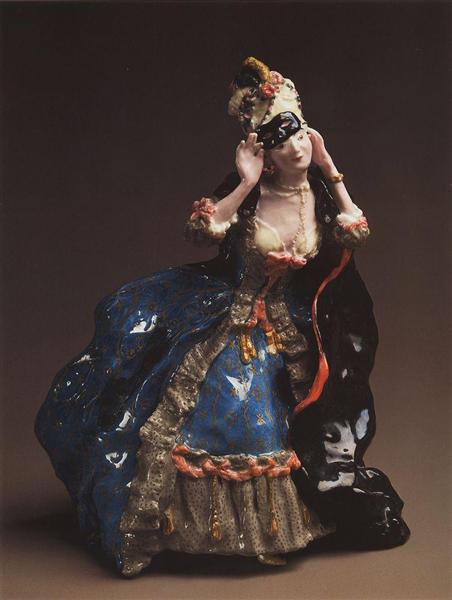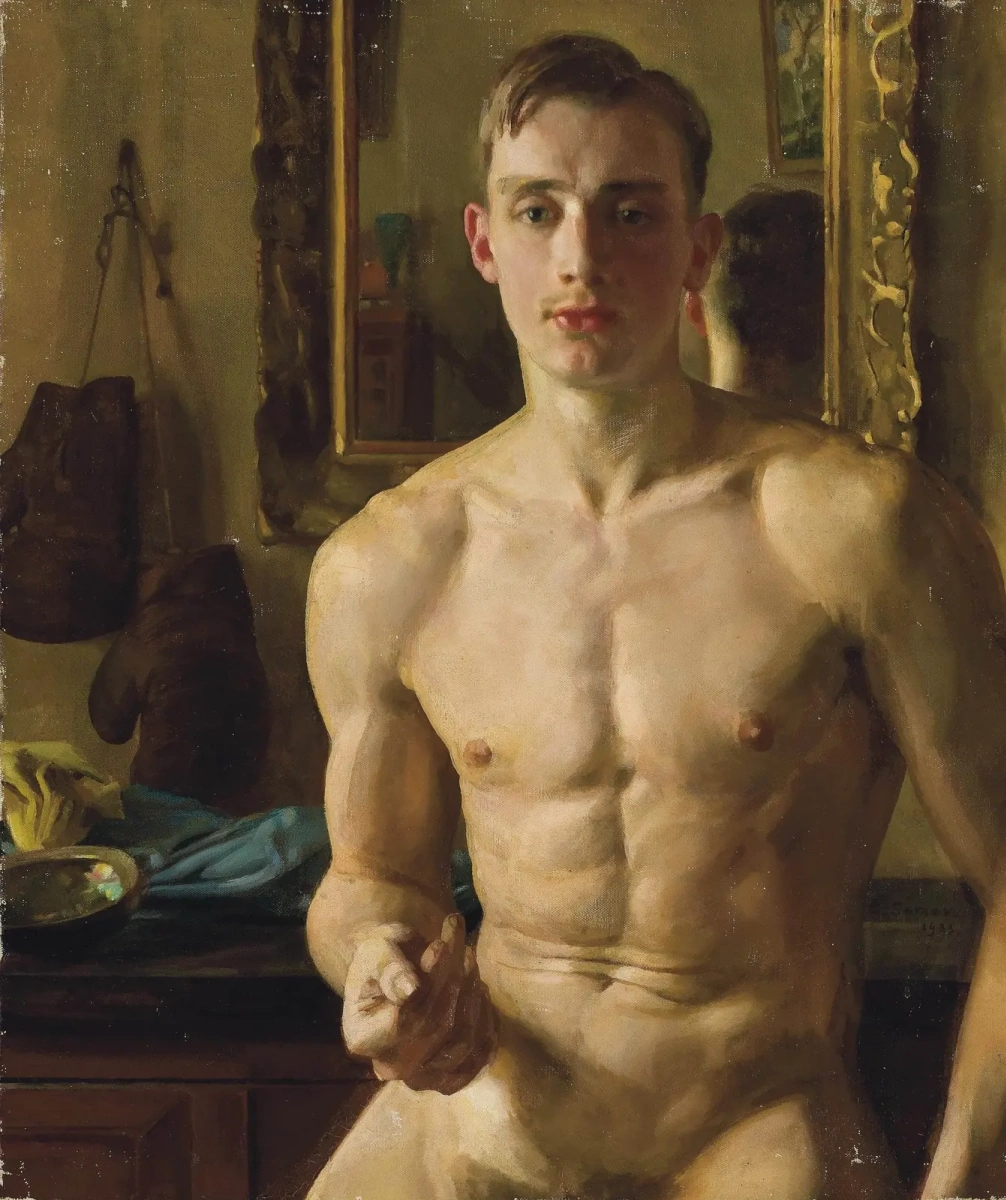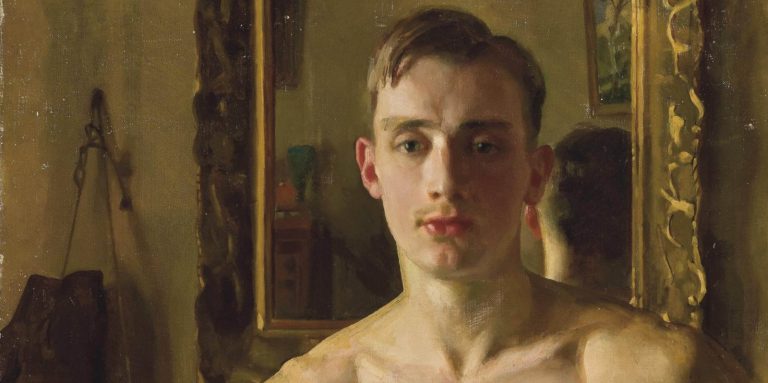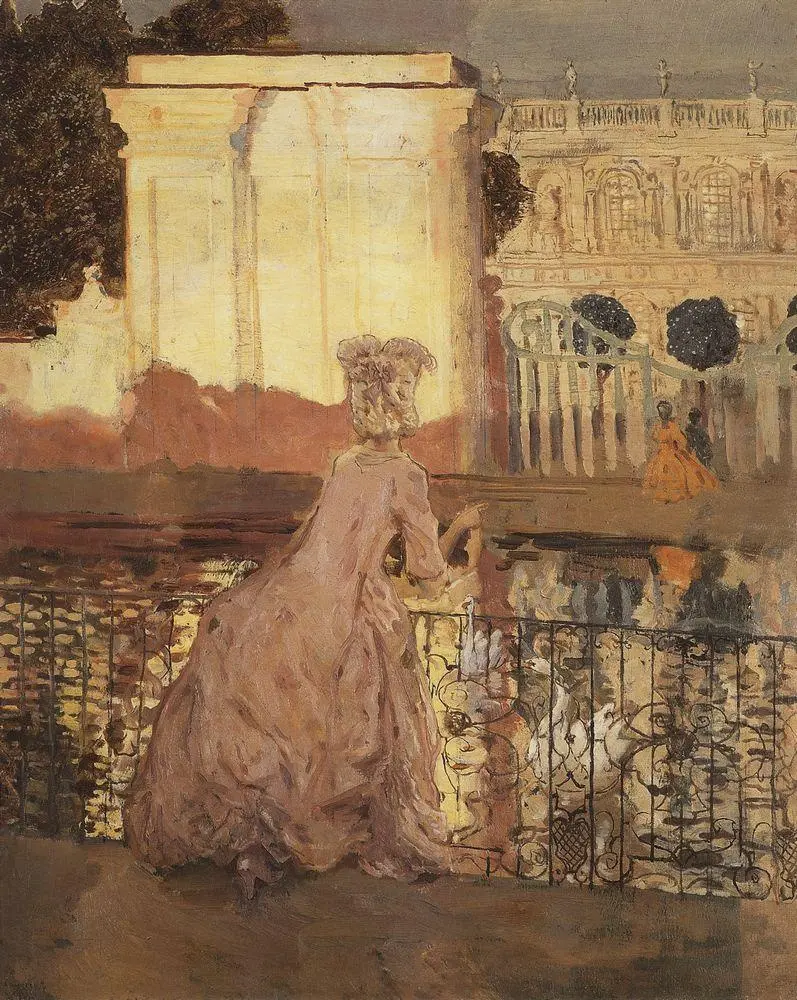Konstantin Somov (1869-1939) was a Russian painter, co-founder of the artistic movement Mir Iskusstva and well known for his watercolors associated with the 18th-century style. A frequent inspiration for Somov’s artworks were the characters, Marquise and Harlequin; depicted with painted doll faces, and often shown kissing in the park. These whimsical scenes are a far cry from his later works with its focus on male nudes! But let us guide you through his captivating and intriguing queer world!
Homosexuals in the Russian Empire
Surprisingly, the Russian government didn’t begin its fight against homosexuality until much later than many other European countries. It wasn’t until the 18th century, that tsar Peter the Great abolished homosexual affairs in the army and navy. From 1866 serious punishments were introduced for being homosexual: confiscation of property, expulsion from occupations, and exile to Siberia. Nonetheless, Russian society was generally tolerant of gay people, so they were seldomly punished. Moreover, the law did not recognise lesbians at all!
Russian gay culture had its own slang. For instance, the word “tyotka” meant a rich man who buys a young boys’ love, similar to “sugar daddy” nowadays. Contrarily, there wasn’t a specific term for men who sell their “love”?

Gay men would often meet in parks, confectionaries, restaurants, and regularly in public saunas, which were said to be male only brothels. In order to recognize each other in public, gay men would often wear either a red hanky in the top pocket of their jacket or a red tie.
But what about the Russian artists and intelligentsia? The well-known Russian poet and philosopher, Vyacheslav Ivanov founded a narrow circle of “Druzia Gafiza” (“Hafez’s friends”, after the Persian poet Hafez). It was an intimate, artistic circle of poets, artists, and philosophers who were looking for the perfect formula for true love. Thus, “Druzia Gafiza” became a kind of love laboratory, where its’ members (both straight and gay, and including polyamorous people), dressed up in costumes and read erotic poems. Their favorite entertainment was attending a masquerade party, where they would dress up in antique or oriental costumes designed by Konstantin Somov. These “Friends” aspired to a new sort of aesthetic based on sexual and physical beauty.
Ugly women in Konstantin Somov’s artworks
Now, let’s take a closer look at some of Konstantin Somov’s paintings. His unique manner of painting could hardly be mistaken for any of the other modernist artists. From his teenage years, Konstantin Somov was interested in 18th-century art and fashion. Somov was particularly attracted to sensual scenes associated with the Rococo style. Romantic scenes of erotic affairs inspired the artist and were the perfect background to express his own sexuality.

Interestingly, women in Konstantin Somov’s artworks are often depicted as ugly. Leon Bakst, a famous Russian illustrator, thought that Somov was either attracted to ugly, rough women or he was offensively mocking them. But Somov made a note in his diary that clarified his true attitude to the female characters in his paintings:
“One clever Valechka who knows me better than everyone else recognized me: women in my pictures convey the longing of love; there is sadness or prurience on their faces – the reflection of me, my soul, and my affection for men. And their broken poses, evident ugliness are an evil joke on myself… Dresses, feathers attract me not only as a painter…”
Konstantin Somov, from the diary. Quote source: Pavel Golubev. Konstantin Somov: a Lady taking off a mask.
As you can see from this quote, Konstantin Somov likened himself to a cisgender woman because of his affection for men. However, at the same time, he despised women as sexual partners.

A lady taking off a mask
A Lady taking off a mask is one of the most remarkable artworks of Konstantin Somov. The contrast of the lady’s face and her mask highlights the two different sides of Somov’s personality.

Depictions of lavishly dressed women endlessly strolling in shadowy, solitary places reflects the continuous wandering of Somov’s own mind, and the search for his true self.
The male body in Konstantin Somov’s paintings
In the 1920s, Konstantin Somov moved to Paris. During this time, he made the acquaintance of Boris Snejkovsky who became the main model for Somov’s male nude paintings during the 1930s.
In the Fall of 1929, Somov received a commission to paint illustrations for Longus’ novel, Daphnis and Chloe based on a Greek legend of two adolescents in love. Somov’s comment regarding his acquaintance with Boris Shejkovsky is well worth a read:
“This work is very interesting for me, but difficult because I must be able to paint nudes, but I cannot… I began to draw sketches from a naked body. So far I have found one Russian, posing very well, but too athletic for Daphnis, and persuaded him to 10 sessions.”
Konstantin Somov. From the diary, 1929. Quote source: Pavel Golubev. Konstantin Somov: a Lady taking off a mask.

From that time on, Somov called Boris “Daphnis.” Moreover, from 1933, the artist started work on a watercolor series: Male Nudes in Boucher’s Manner. The paintings focus on the curves of Boris’ muscles. The most remarkable painting of Boris Snejkovsky is The Boxer.

The image of the naked man almost covers the entire canvas. The figure of Boris is illuminated as though in the boxing ring. The shadows emphasize the curves of his muscles. Another example of a male nude is Somov’s painting, The Naked Young Man.

In this painting Boris is asleep. The artworks from the series, Male Nudes in Boucher’s Manner are tranquil, peaceful, and light-hearted. Perhaps, a romantic friendship with the young and beautiful Boris, distracted Somov from the gloomier thoughts that overshadowed his earlier years.





